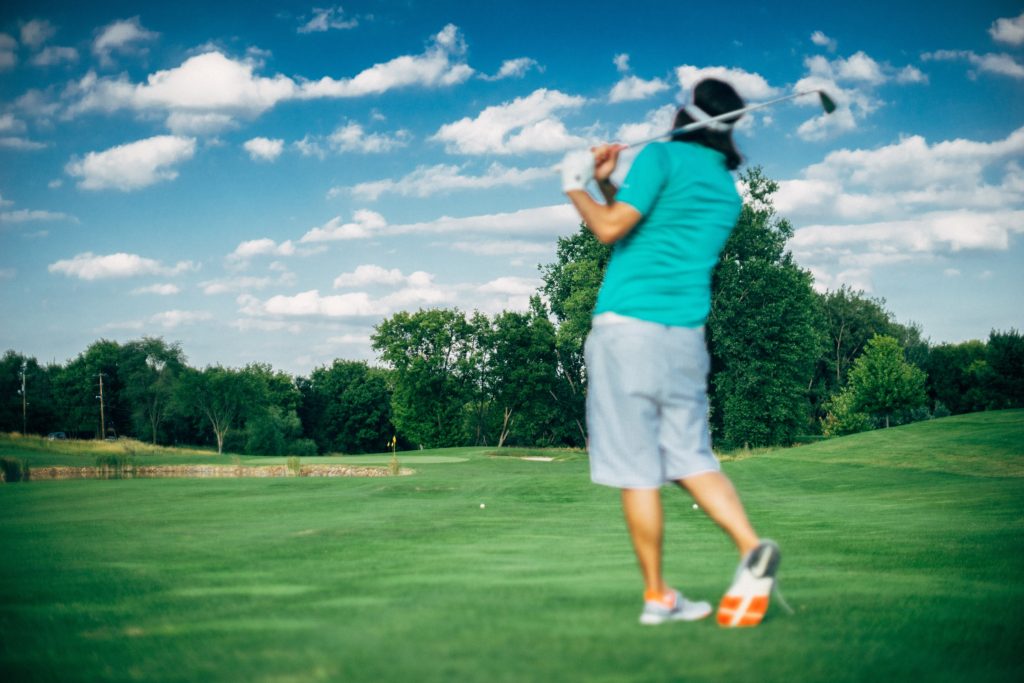
01 Apr How to Keep Your Patients Injury-Free While on the Golf Course
By Christina DeBusk
History was made in 2015 when Jordan Spieth, then 21, won one of golf’s highest honors: the Masters Tournament. At the time, he was the second-youngest player to earn this title, a distinction previously held by Tiger Woods in 1997.
Shortly after receiving the Green Jacket, Spieth spoke to the media about his journey and how it felt to have finally have earned the jacket. He also thanked the people he felt helped him along the way. One of these individuals was his chiropractor who’s been working with him since he was just 16 years old, Dr. Troy Van Biezen, DC, ART, BPE, NASM-PES, TPI-GGFI.
The Man Behind the Scenes
Van Biezen is no stranger to athletes at the pro level as he’s been working with golfers on the PGA tour for 15 years. In fact, over the past three years, his players have won a total of 37 times, including 7 Major Championships. Yet, he not only serves those who earn their notoriety on the golf course, but also those who play professionally in other sports as well, like the NFL, NHL, NBA, and MLB.
Sometimes this involves working with these elite champions at his office, ChiroSport Specialists of Dallas, located in Dallas, Texas. However, he also travels the nation quite a bit, approximately 30-35 weeks a year with the PGA Tour alone. And in his “off time,” you can often find him teaching other healthcare professionals how to perform functional assessments on athletes, provide injury care, and improve their patients’ sports performance.
How does Van Biezen respond when you ask him about his career as a chiropractor who has worked with many high-level elite athletes? “I feel blessed that I’ve got pretty good hands,” says Van Biezen, sharing that he’s been fortunate to help many great athletes along the way. In regard to golf specifically, this often helping them prevent and treat the number one complaint—lower back pain.
The #1 Golf-Related Injury
Van Biezen says that this is because golf is a rotary, one-sided repetitive motion, ultimately creating asymmetry and imbalance in the body. Further, if the hips and thoracic spine aren’t rotating properly, or if there is limited mobility in the shoulder area, this stress can transfer to the lower back, causing the pain that many golfers feel.
Zach Johnson, another golf great who won the Masters in 2007 in Augusta, Georgia, is a great example of this as he once called Van Biezen three hours before tee time, indicating that his back locked up on him. “I met him at golf course, worked with him for over an hour, did some exercises and manipulations, and he played good that day,” says Van Biezen.
Back pain isn’t just experienced by the pros either as this is an issue that Van Biezen says he sees with people of “every age and every level,” thanks largely to our sedentary lifestyles. By spending our days sitting behind a desk, on a plane, or in the car, the end result is often muscle tightness and imbalance, says Van Biezen. Add that to the loss in mobility and flexibility we tend to experience as we get older, and it’s easy to see how the lower back can become the problem spot.
So, how can DCs help their patients—whether pro golfers or those who simply enjoy spending time on the course for fun—avoid lower back issues? There are a few options to consider.
Golf Injury Prevention Remedies
Because flexibility is a top priority when it comes to protecting the lower back, Van Biezen says that he does a lot of stretches and Active Release Therapy with his patients. This helps them keep the range of motion they need to safely engage in in this sport by reducing the tension and stress being placed on the lower back.
This is critical as Van Biezen estimates that, out of 100 golfers, about 95 to 99 of them will have only half of the normal hip rotation. Plus, junior golfers lose the flexibility in their spine as they grow, which makes addressing this issue even more important with this demographic, giving them the opportunity to continue to play the sport they love without damaging their body over time.
Van Biezen shares that it is also important to work with golfers to improve the strength and stability of their glutes. Performing exercises targeted at this area can help prevent injuries since this set of muscles helps protect the area of the spine just above the hip. Make it stronger and it is more capable of doing this job.
Of course, regular manipulations and soft tissue work can also help a golfer keep his or her body in prime condition for the course. These treatment sessions also help improve range of motion, as well as removing any existing scar tissue before it can potentially interfere with their game.
Finally, having the right equipment, using proper techniques, and understanding their own physical limitations can also help keep golfers safe while on the course. Though Van Biezen can easily work with his patients on these three things right in his office as it is specially designed with the golf pro in mind, even reinforcing these areas of focus can help your patients enjoy pain-free play.
In the end, Van Biezen says that it’s important to remember that “the majority of the time, the back is not the problem. The back is just working too hard because other body parts aren’t doing their job.” In other words, “don’t chase the pain, find the cause.” And if you can get the other body parts to pull their weight by doing these few things, the back can enjoy some relief.


Sorry, the comment form is closed at this time.